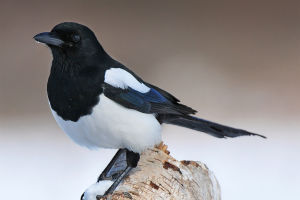Egrets are common, large white birds belonging to the family Heronidae. They are typically found in wetland environments near rivers, lakes, swamps, coasts, and other bodies of water around the world.
Egrets are larger, usually measuring between 80 to 100 cm in length, with a wingspan of over 1.5 meters. Their head is long and thin, their mouth is pointed, and their lower jaw is prominent.
Egrets have highly valued white feathers, which have no significant color differences between males and females. The size and behavior of the birds are the primary way to distinguish males and females.
The white plumage is easily stained by oil and other pollutants, which can hinder their survival, affecting their ability to fly and maintain warmth.
Egrets are similar to other herons in their habits, but some species perform courtship displays. They typically hunt small fish in shallow water, as well as amphibians, reptiles, mammals, and crustaceans.
Compared to other birds, egrets have a better sense of smell, allowing them to locate prey more easily, primarily using their olfactory nervous system and chemoreceptors in the nasal cavity.
Egrets typically walk along rivers, salt pans, or paddy fields and peck while walking. Their long mouth, neck, and legs are convenient for catching animals in the water.
While preying, egrets wade lightly and walk forward, using their eyes to watch for small animals in the water. They suddenly peck into the water with their long beak, accurately pecking food into their beaks.
Egrets are beautiful birds with snow-white feathers that are graceful, especially when their wings are spread out. They usually inhabit environments such as woods, grasslands, and water sides, forming habitats in groups.
The breeding season is from May to July every year, and they nest on rocks near the coast of islands or cliffs, as well as between dwarf tree branches. Egrets like to nest together in groups, with as many as 14 nests on a hanging rock with only 20 square meters of space, and distances between each nest ranging from 14-76 cm.
Egrets are migratory birds that make long flights to reach their breeding or wintering sites, with some traveling thousands of kilometers, making them among the best in bird migration.
In addition to being beautiful, egrets play an important role in the ecosystem. As carnivorous birds, they prey on aquatic animals, such as fish and frogs, and help control diseases and insect pests in water.
Human activities such as overfishing, water pollution, and wetland development can affect the living conditions of egrets and impact their survival and reproduction. Therefore, protecting the ecological environment of wetlands and aquatic organisms is crucial to maintaining the survival of egrets and other aquatic birds.
Egrets are also popular among bird watchers. With the right timing and location, one can observe them looking for prey by the water, nesting in the woods, and soaring in the sky. Bird watching is a good way to get in touch with nature and learn about biodiversity.
Egrets are beautiful, interesting birds with unique characteristics and habits that provide opportunities to learn more about nature and biodiversity. Protecting their ecological environment is essential to their survival and the survival of other aquatic birds.


